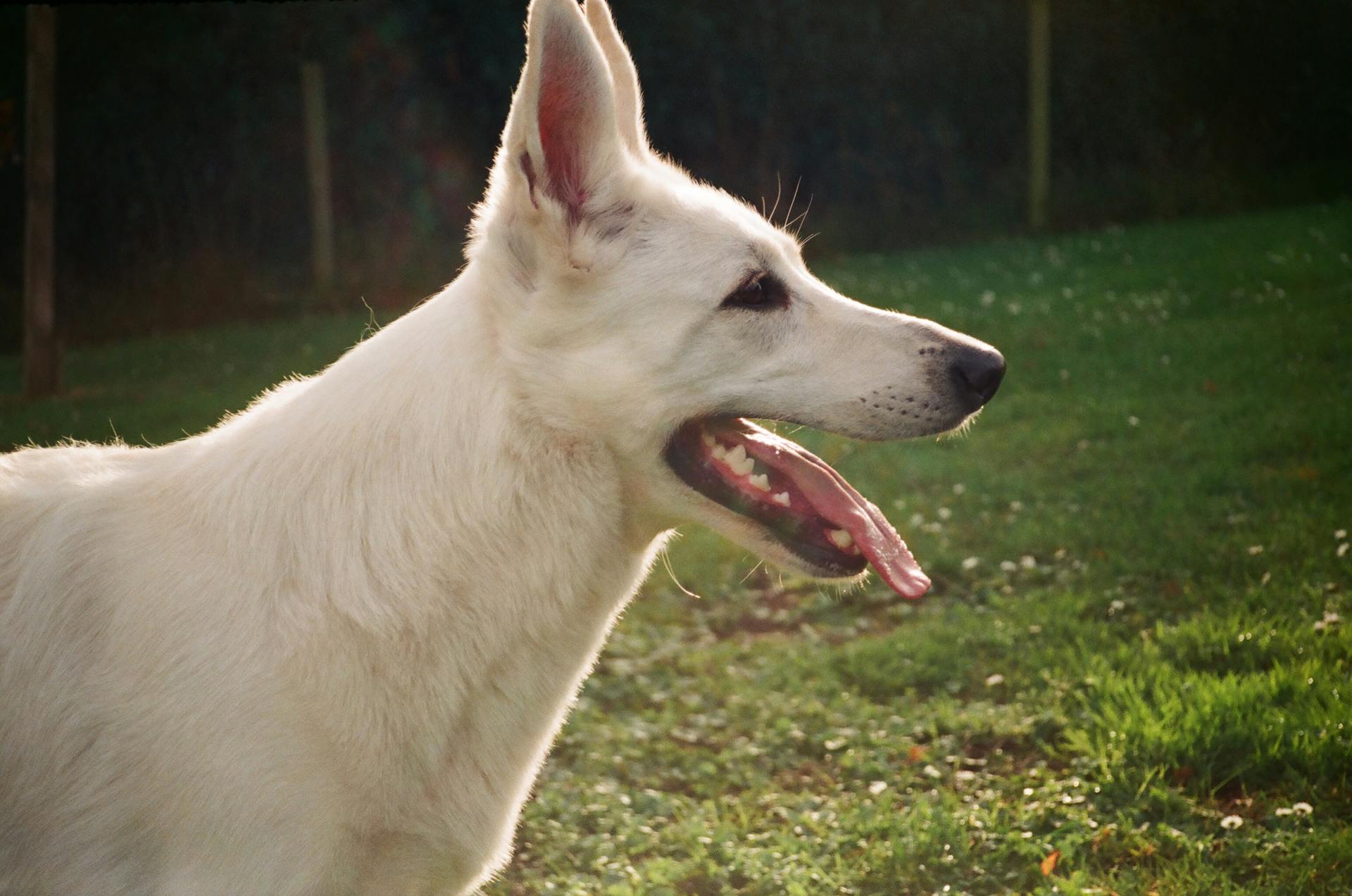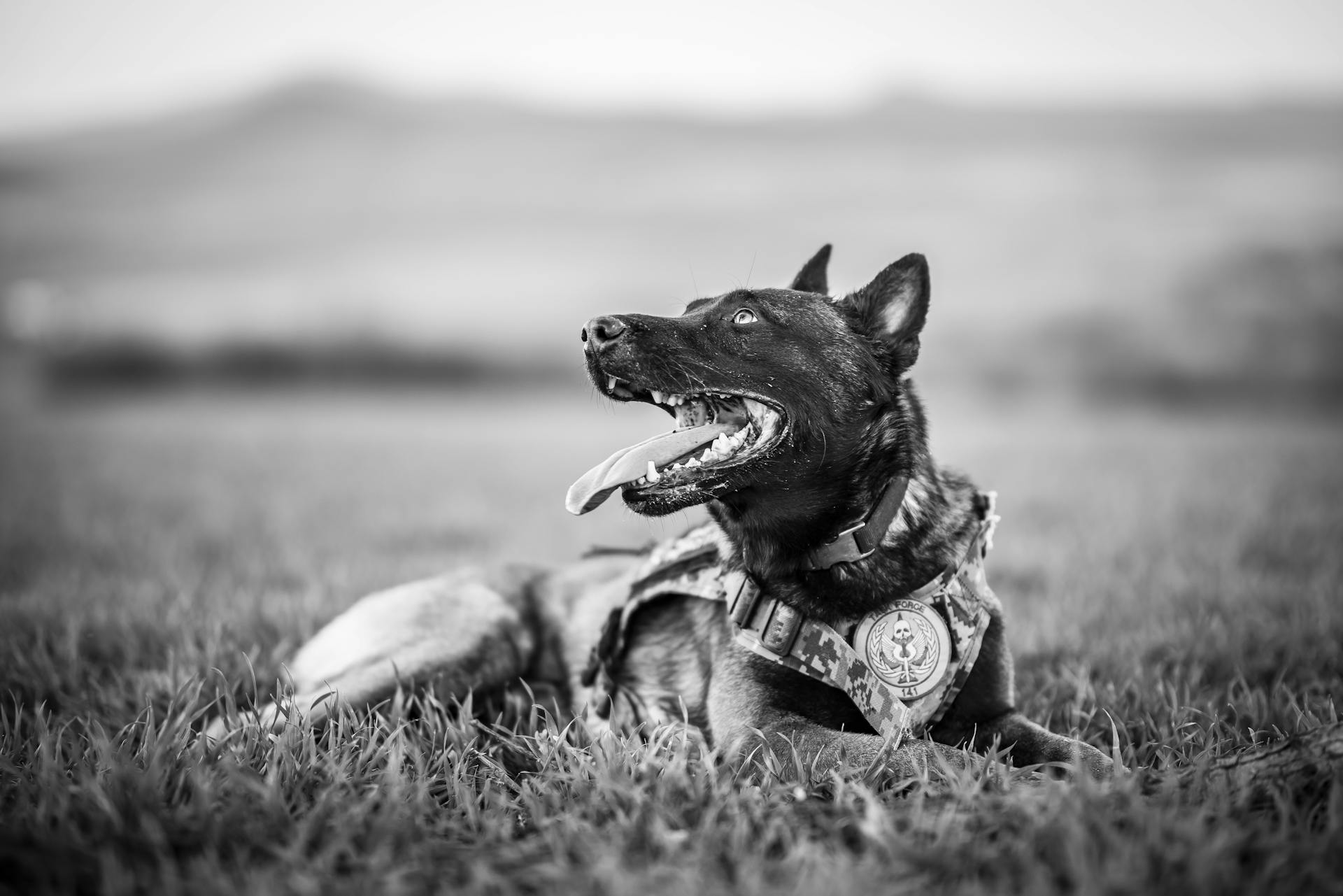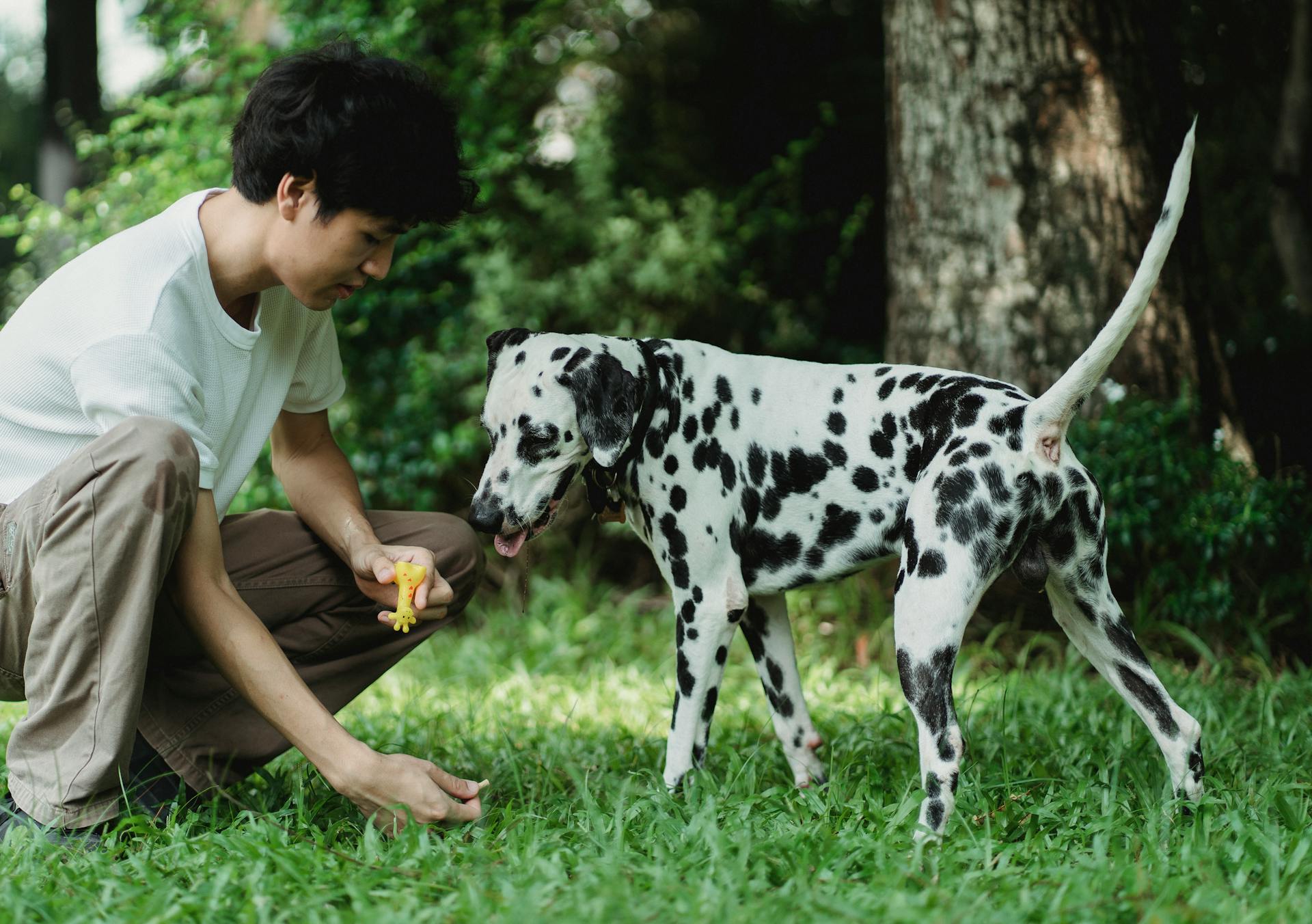
Training a k9 puppy requires a structured approach, starting from the first day you bring them home. Puppies learn best between 8 and 11 weeks old.
Socialization is key during this period, with puppies learning to interact with their environment and people. This is a critical period for socialization, as it sets the foundation for their future behavior.
A consistent routine helps puppies feel secure and develop good habits. Puppies thrive on predictability and respond well to a structured schedule.
By providing a stable environment, you can help your puppy develop into a confident and well-adjusted adult dog.
Training Basics
Training Basics is where it all starts. You need to establish a solid foundation before you can begin training your K9 puppy.
Start with a dog obedience program to set consistent protocols for you and your puppy to follow. This will make training easier and more effective for both of you.
Positive reinforcement is key. Reward your puppy with treats, toys, or pets when they exhibit good behavior. This technique can even be used to train fully potty-trained dogs to ring a doggy doorbell to signal when they need to go outside.
Explore further: How Long Do Puppies Cry When Crate Training
Training sessions should be fun for both you and your puppy. Keep them short to prevent frustration, maintain a light tone, and be fair to your puppy. If you're both enjoying yourselves, your training sessions will be much more effective.
Here are some essential commands to get you started:
- Sit
- Stay
- Down
- Come
- Heel
- Place
These basic commands will help you establish structure, overcome common behavior problems, and keep your puppy safe.
Housebreaking
Housebreaking is a crucial part of training your K9 puppy. Consistency and diligence are key during the housebreaking process, as it's not always easy.
You'll need to teach your puppy where to go potty, unless you plan to keep them outdoors, which is not recommended. Housetraining is a fundamental aspect of dog training that requires patience and persistence.
Here are some essential facts to keep in mind:
- Crate training can be a very helpful part of the housebreaking process, as it provides a safe space for your puppy to relax and learn.
- Submissive/excitement urination in dogs may be a sign of a more complex issue, and it's essential to address it promptly to prevent accidents in the house.
Houses
Housebreaking can be a challenging but essential part of dog ownership. Housetraining is one of the first things you need to work on with your dog, unless you plan to keep them outdoors, which is not recommended.
Crate training can be a very helpful part of the training process, including housetraining. It will give your dog a place of their own and help with housebreaking.
Consistency and diligence are key during the housebreaking process. It's not that complicated, but it does require effort and patience.
If your dog is still having accidents in the house, it may be more than a simple housebreaking issue. Submissive/excitement urination in dogs is a common problem that can be addressed with the right training.
Here are some key things to keep in mind when housetraining your dog:
- Crate training can help with housebreaking.
- Consistency and diligence are key during the housebreaking process.
- Submissive/excitement urination can be a sign of a more complex issue.
Teaching Necessary Functions
Teaching necessary functions is a crucial part of housebreaking. A well-trained dog responds to commands all the time, not just some of the time.
A dog can't SIT and jump on a person at the same time, which is why teaching the SIT command is essential. This is especially important in social situations where your dog needs to behave politely.
A dog can't SIT and STAY and run out the door into traffic at the same time. This is a critical safety consideration that requires consistent training.
A dog that obeys the HEEL command won't pull you down the street, making walks much more enjoyable. This is a result of teaching your dog to walk by your side.
Here are some examples of how teaching necessary functions can improve your dog's behavior:
By teaching these necessary functions, you'll have more control over your dog's behavior and ensure their safety and well-being.
Leash Training
Leash training is a crucial part of a dog's education. Every dog needs to learn to walk on a leash, as most areas have leash laws.
Keeping your dog on a leash is not only a law, but also for his own safety. Leash training teaches your dog not to pull or lunge when on the leash, making the experience more enjoyable for both you and your dog.
A loose leash walk is achievable with patience and practice. Introduce your dog to a leash and a no-pull harness, then teach him how to walk properly on it, even beside you on a bike.
Readers also liked: K9 off Leash Training E Collar
Socialization
Socialization is a crucial aspect of training your k9 puppy. It's the process of exposing your puppy to new people, animals, and places, which helps them develop confidence and prevents the development of fears and phobias.
Socialization can start as early as 8 weeks old, when your puppy is first getting their shots. It's essential to socialize your puppy in the first 3 months of their life to shape how they react to any situation.
Socialization isn't just about exposing your puppy to new things, it's also about allowing them to approach and interact with their surroundings. Proper socialization involves allowing your puppy to experience sights, sounds, people, and places.
Here are some key socialization milestones to keep in mind:
- Puppy socialization is most effective in the first 3 months of life.
- Socialization helps prevent the development of fears and phobias.
- Proper socialization allows your puppy to experience their surroundings and interact with new things.
By socializing your puppy properly, you can help them become a happier, more well-behaved dog that's welcomed by others.
Behavior and Obedience
Behavior and Obedience is a crucial aspect of training K9 puppies. Every dog is unique, but there are common characteristics that can be focused on to deliver the best results.
To establish consistent protocols, start a dog obedience program that sets a basic foundation for your puppy. This will make training easier for both you and your dog. Positive reinforcement is key, rewarding desired behaviors with treats, toys, or affection.
Common dog behavior problems can be fixed through behavior modification, addressing fear, aggression, and lack of socialization. Separation anxiety, lack of confidence, and dominance can also be addressed. The most common problems include fear of people, dogs, animals, or public places, as well as aggression towards people, dogs, or other animals.
Here are some common behavior problems that can be addressed:
Proofing behaviors is the last step in training your dog to do any new behavior. This involves practicing behaviors in different locations with varying levels of distraction to ensure your dog will behave well in any situation.
Proofing and Troubleshooting
Proofing and troubleshooting are crucial steps in ensuring your dog's obedience training sticks. You've spent time and effort teaching your dog new behaviors, but without proofing, they may not generalize to other environments.
Practice, practice, practice is key. Without practicing behaviors in various places with different levels of distraction, your dog may forget their training when outside the house.
Recognizing common dog behavior problems is essential for detecting and addressing them before they get out of control. Understanding potential issues can save you a lot of stress and frustration.
Here are some common dog behavior problems to watch out for:
- House soiling or accidents
- Separation anxiety
- Destructive behavior
- Aggression towards people or other animals
- Overexcitement or hyperactivity
Remember, proofing is the last step in training, but it's not a one-time task. It's an ongoing process that requires consistent practice and attention to your dog's behavior.
Behavior Modification
Behavior modification is a crucial aspect of dog training that helps address common issues such as fear, aggression, and lack of socialization. These problems often manifest as fear and aggression towards people, animals, or public places.
Behavior modification can fix any form of fear, including fear of dogs, people, animals, men, women, and public places. It can also address aggression towards people, dogs, animals, and cats.
Broaden your view: Aggressive Behavior in Puppies Training
Lack of socialization is a common issue that often shows up as fear and aggression. This can be addressed through behavior modification.
Separation anxiety is another issue that can be addressed through behavior modification. This is a common problem that can be caused by a lack of training and socialization.
Lack of confidence can also be addressed through behavior modification. This is a common issue that can be caused by a lack of training and socialization.
Here are some common behavior modification issues that can be addressed:
- Fix any form of fear
- Fix any form of aggression
- Lack of socialization problems
- Separation anxiety
- Lack of confidence
- Domineering behavior
By addressing these common issues through behavior modification, you can help your dog become a well-behaved and confident companion.
Training Methods
Clicker training is a simple and effective dog training method that's perfect for teaching basic and advanced commands and tricks.
It's a form of positive reinforcement that many people find helpful, and it's surprisingly easy to learn.
With clicker training, you can teach your dog quickly and efficiently, making it a great option for busy owners.
Clicker training is a fast and easy method to learn, so you can start training your puppy right away.
Curious to learn more? Check out: Clicker Training for Puppies
Training Options
At Buckeye K9, you have a few training options to choose from, depending on your needs and schedule.
Their exclusive board and train program, Learn for Life, is a great choice for those who want a custom-designed training experience. This program is tailored to your goals, your dog, and your family.
If you prefer a more flexible option, you can sign your dog up for daycare and train. This program allows your pup to learn new skills, get exercise, and have fun while you're at work. You can even schedule private training sessions while your dog is at daycare.
Here are the pricing options for daycare and train:
If you have a new puppy, you may want to consider Buckeye K9's 3-week puppy training class. This class is designed to teach owners how to socialize their puppy and learn techniques for training.
Most Popular Option
Our most popular training option is Learn for Life, an award-winning board and train program that's custom-designed to meet your specific goals and needs. This program is tailored to your dog, your family, and your lifestyle.
If you're looking for a more hands-on approach, Learn for Life is an excellent choice. You'll have the opportunity to work closely with experienced trainers who will help you and your dog achieve your training goals.
To enroll in Learn for Life, simply give us a call or email our trainers. We'll take care of the rest, ensuring that you and your dog receive the best possible training experience.
Here are the basic requirements for Learn for Life:
- Custom-designed training program
- Experienced trainers
- Flexible scheduling to accommodate your needs
Daycare and Train
If you're looking for a convenient way to get your dog trained while they're at daycare, Buckeye K9 offers a daycare and train program.
This program is designed to teach puppies and dogs of all ages basic obedience and help them overcome behavioral issues.
You'll enjoy knowing that your pup is learning new skills, getting exercise, and having fun while you're at work or running errands.
Our highly skilled staff closely monitors playtime to ensure that all dogs are safe and happy.
You can sign up for our daycare and train program after completing a free evaluation with our trainer.
Here are the pricing options for our daycare and train program:
Group Classes
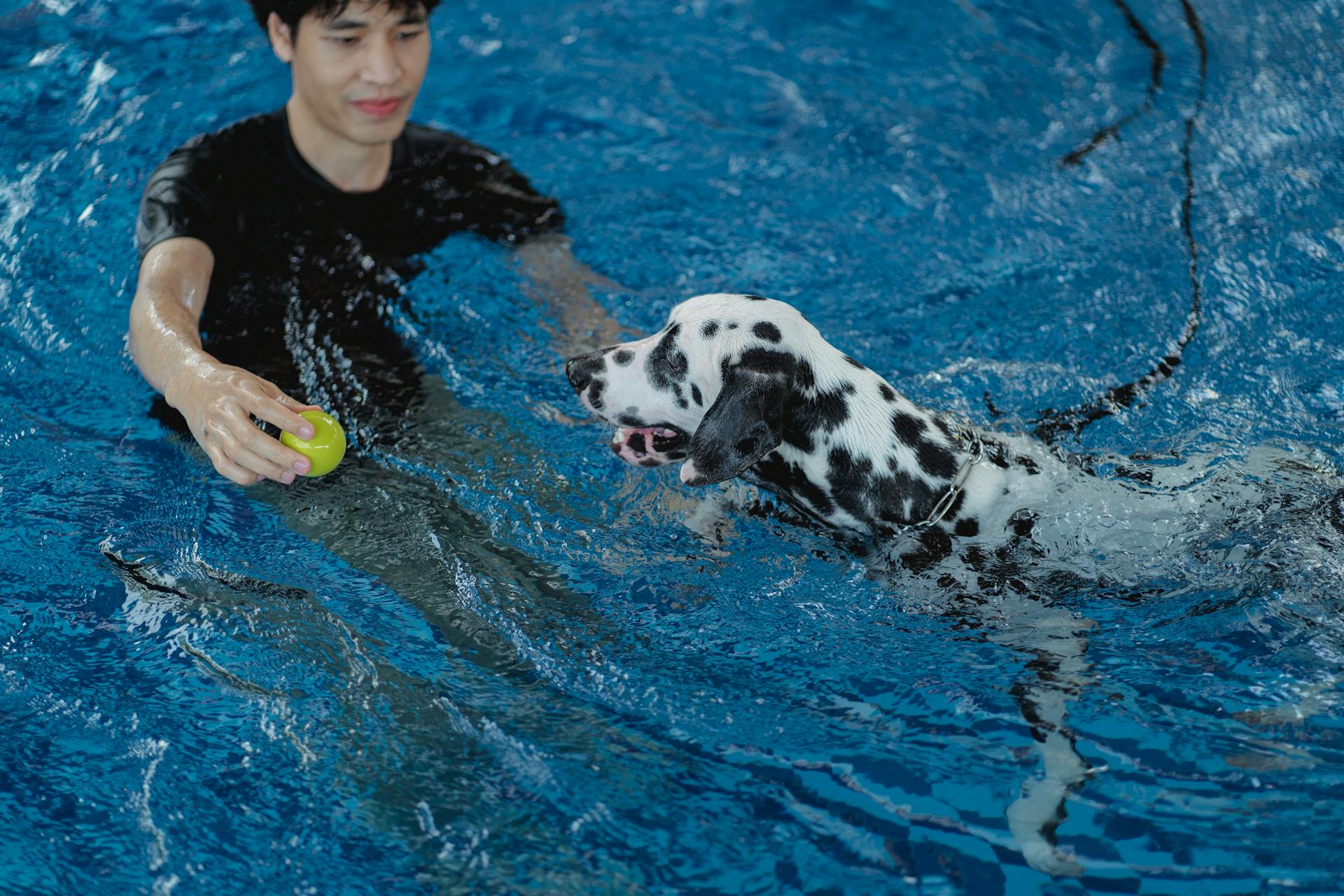
If you're looking for a fun and interactive way to train your dog, group classes are a great option. You can register for open enrollment classes in advance to ensure a spot.
Group classes are designed to teach your dog basic manners and obedience, as well as tricks and agility. Our experienced trainers will guide you and your canine companion through each class.
To enroll in a group training class, you can give us a call, email our trainers, or request to enroll via our customer portal. You can follow these simple steps: click "Enroll Online" to go to our "Customer Portal", click "Request Services" after logging in, click "Book Training Now", select the class you'd like to enroll in, and click the blue "Request Enrollment" button.
Group classes are not recommended for children under the age of 10, and all children must be directly supervised by an accompanied adult at all times.
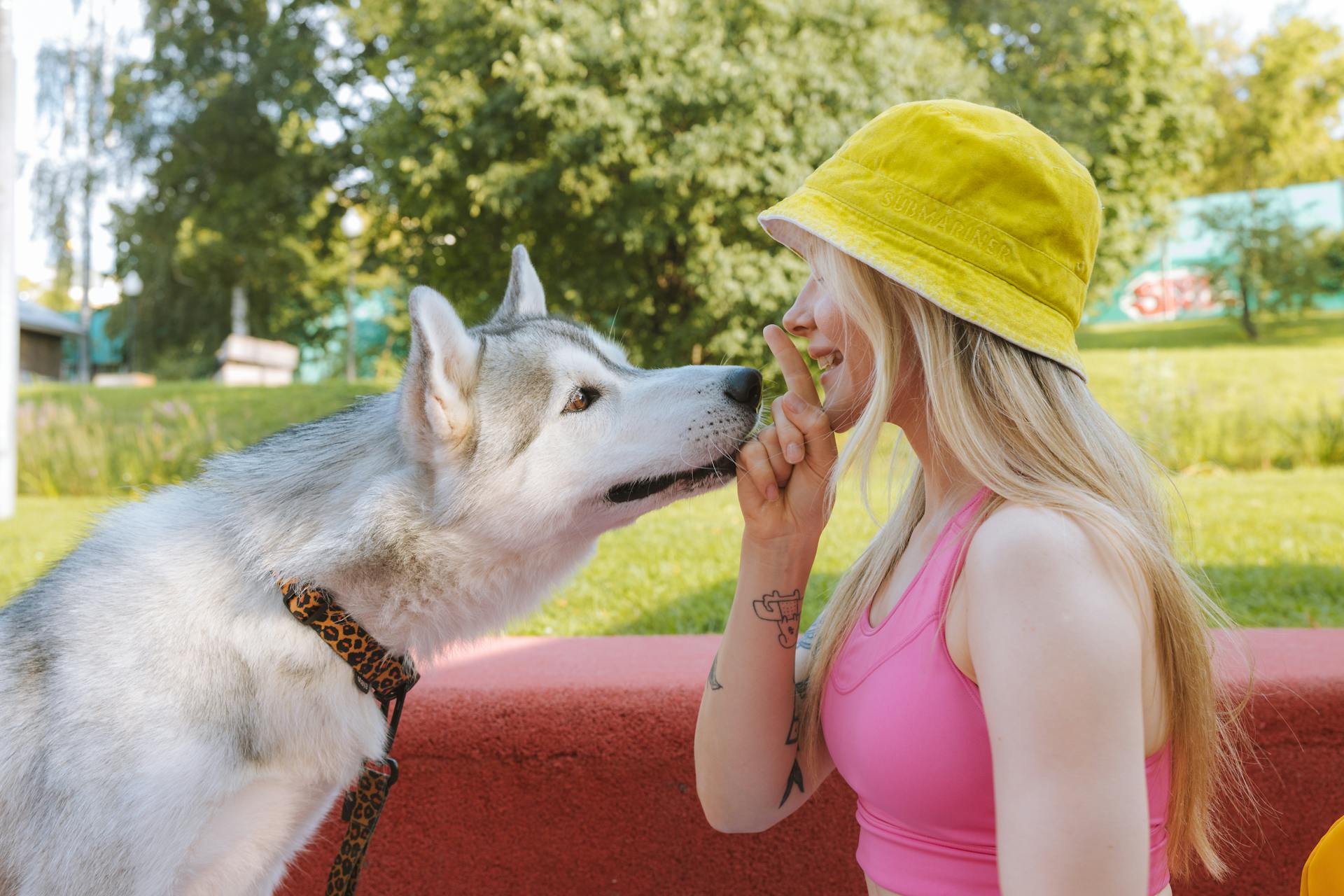
Here are the costs for group training classes:
Puppies must have all age-appropriate vaccinations, and must be up to date on all shots for their age requirement. For puppies 8-16 weeks old, this means having the first round of shots and Bordetella (if vet allows).
Additional reading: Dog Training Age
Featured Images: pexels.com
